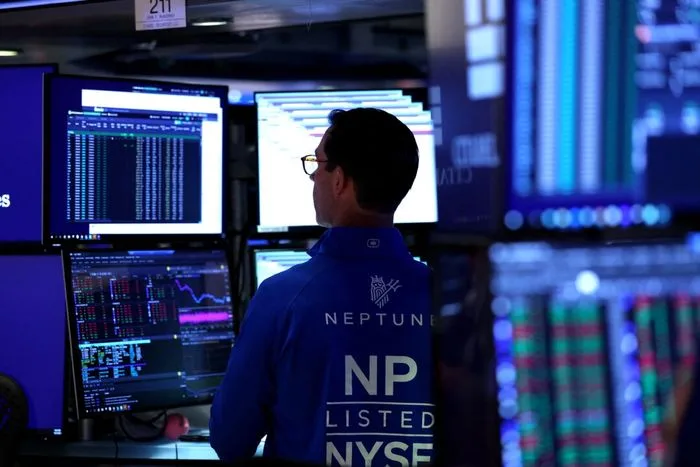By Panos Mourdoukoutas
Stocks shook off concerns about the government shutdown and reached new highs this week, led by technology, small-cap, and health care shares on a flurry of positive corporate headlines and the prospect of lower interest rates.
The Dow Jones Industrial Average ended the week on Oct. 3 at 46,758, up by 1.1 percent for the week. The S&P 500 Index closed at 6,715, up by 1.09 percent. Both indexes closed near new records reached during the week.
The technology-heavy Nasdaq also ended higher for the week, up 1.32 percent, to 22,780, while the Russell 2000 gained 1.72 percent, resuming its multi-week rally.
The rally broadened, with health care shares staging a strong rebound. The Vanguard Health Care ETF gained 6.47 percent for the week, outshining the rest of the market.
Market volatility, as measured by the Chicago Board Options Exchange’s Volatility Index, rose by 8.89 percent from last week to 16.65.
After staying on the sidelines for a week, investors returned to the market, buying up tech shares and small caps that had lost ground the previous week.
The interest in stocks came despite signs of an imminent federal government shutdown, which became a reality on Oct. 1.
Historically, government shutdowns add uncertainty to the economic outlook, but they have a marginal effect on the overall economy, according to S&P Global.
One of the immediate consequences of the government shutdown is the absence of the release of government statistics on the economy, including the closely followed non-farm report, scheduled for release on Oct. 3.
Still, investors got a glimpse of the labor market from the JOLTS job openings report released on Sept. 30, less than a day before the shutdown. It showed job openings rising by 19,000 to 7.227 million in August, up from an upwardly revised 7.208 million reading in July, in line with market expectations. The report indicates that the economy’s “low fire, low hire” trend continued.
Two additional private reports released over the following two days presented a mixed picture of the labor market.
The ADP Employment report, released on Oct. 1, showed that private businesses cut 32,000 jobs in September, following a revised loss of 3,000 in August, marking the steepest job decline since March 2023.
On Oct. 2, the private Challenger report showed that United States-based employers cut 54,064 jobs in September, the lowest in three months. This was down from 85,979 in August and 25.8 percent lower than the same month in 2024. However, planned layoffs by employers totaled 202,118 in the third quarter, the highest third-quarter number since 2020.
Economic weakness renewed prospects of further interest rate cuts, sending bond yields and the dollar lower for the week.
The benchmark 10-year Treasury bond yield that began the week at around 4.20 percent closed at 4.12 percent, while the U.S. Dollar Index that started the week at around 98.12 closed at 97.7.
A lower dollar boosted the tech sector, which derives a significant portion of its revenues from overseas markets, while lower bond yields supported both tech shares and small caps, which are more appealing to investors as these yields decline.
Another factor supporting stocks during the week was a flurry of corporate headlines that revived the AI buzz, such as OpenAI reaching a $500 million valuation after a share sale to SoftBank and BlackRock’s $40 billion data center deal.
The most critical corporate deal of the week was Pfizer with the White House, in which Pfizer agreed to sell drugs at lower prices in exchange for avoiding tariffs on branded products for three years.
Shares of Pfizer rallied 15.19 percent for the week, pulling along other pharmaceutical, insurance, and medical equipment shares. Merck gained 13.53 percent for the week, Eli Lilly and Company 15.92 percent, UnitedHealth Group up by 4.68 percent, Cigna 8.68 percent, and Medtronic 3.69 percent.
Still, David Laut, chief investment officer at Granite Bay, KERUX Financial, expressed concern over valuations as the market entered October, historically a volatile month for equities.
“We remain opportunistic during pullbacks and remind investors that pullbacks can be subtle and take place in small increments over several trading days,” he told The Epoch Times.
“What takes place in the markets during October can have implications for November and December, which are historically strong periods of time for the markets.”
Laut remains optimistic about equities, driven by earnings and lower interest rates that could push the market higher by the end of the year.
“Regardless of whether or not we see volatility in October, we still expect stocks to rally into year-end, as the markets start to price in 2026 optimism over earnings, rate cuts, and fading trade uncertainty,” Laut said.
Glen Smith, chief investment officer at Flower Mound, Texas-based GDS Wealth Management, views the government shutdown as another brick in the stock market’s wall of worry.
“It comes at a time when many investors are worried that the stock market is vulnerable due to high valuations and a powerful performance throughout September,” he told The Epoch Times.
However, Smith doesn’t see the government shutdown as a reason for portfolio adjustments.
“Any stock market volatility from a government shutdown may be an opportunity for investors, since the overall backdrop for stocks is still positive, with strong earnings and Fed rate cuts,” he said.





